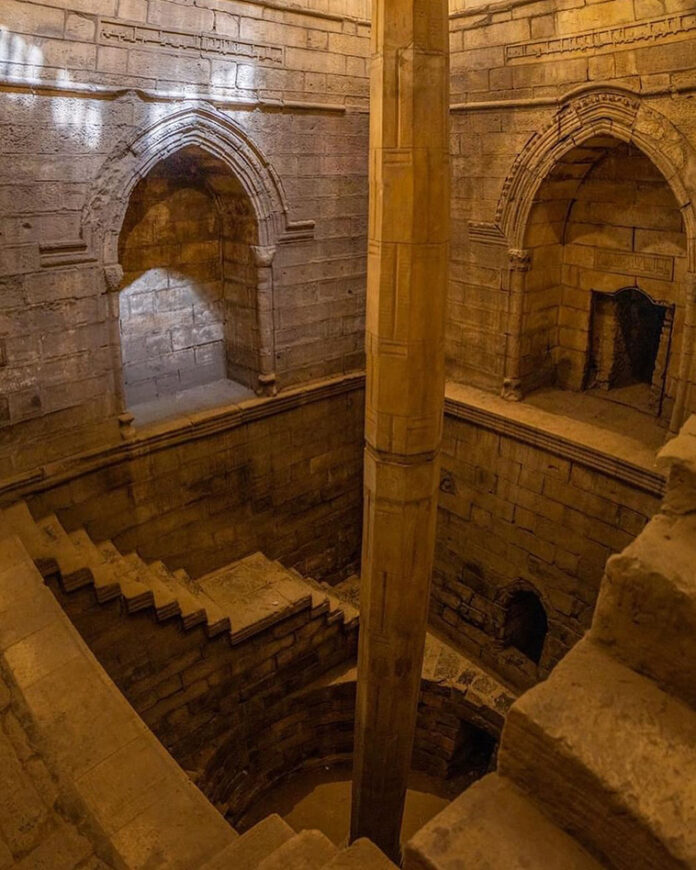For thousands of years, nilometers measured the water level of the Nile River during the annual flood season. This, in turn, was used to predict the fortunes of the annual harvest, the taxes to be imposed (which determined the revenues of the state), as well as the prices of foodstuffs. Therefore, the nilometer was a vital instrument for ancient Egyptian civilization. The significance of the nilometer is evident in the fact that even after Egypt was conquered by foreign powers, nilometers continued to be utilized. As a matter of fact, the nilometer only became obsolete during the 20th century, when the Aswan High Dam was completed.
The Nilometers of the Nile
The Nile was the lifeline of ancient Egypt. The Greek historian Herodotus referred to Egypt as the “gift of the Nile.” The river not only enabled intensive cultivation along its banks but was also used as a means of transport. The annual flooding of the Nile was the river’s most important natural phenomenon, as it helped to fertilize the agricultural land in the delta by depositing millions of tons of silt each year. Additionally, the inundation of the Nile also determined when certain religious and civil festivals were to be celebrated, thereby regulating the rhythm of life in ancient Egypt.
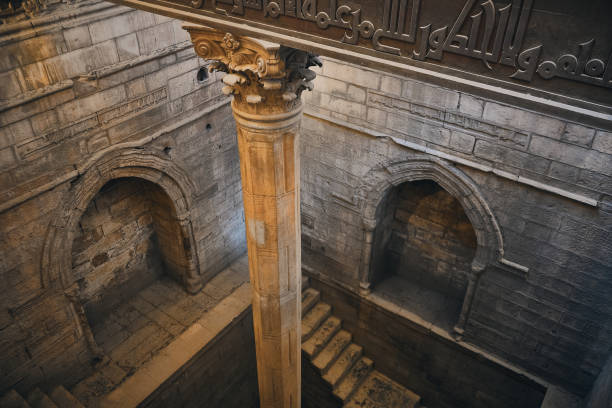
The annual flood season of the Nile lasted from July to October and was caused by the summer monsoon rains over the Ethiopian Plateau. The rainwater flows from the highlands into the Nile via its tributaries, including the Blue Nile and the Atbarah River. The water level of the Nile reaches its peak around the end of August, and this level is maintained till early October, after which it gradually goes down.
In addition to the timing of the annual flood, the amount of water brought by the floods was also crucial. Too much or too little water would have had a negative impact on the lives of those who depended on the river. Therefore, the ancient Egyptians invented the nilometer, a device that measured the water level of the Nile during the annual flooding. As the nilometer was such an important instrument, it would be reasonable to expect that many of them were built by the ancient Egyptians. Today, however, there are not many examples of the device remaining. According to an article published by National Geographic in 2016, “fewer than two dozen of the devices are known to exist”. It seems likely that some nilometers were destroyed by natural disasters, and not rebuilt. Others were simply not maintained and left to fall into ruin.
Nilometers in History
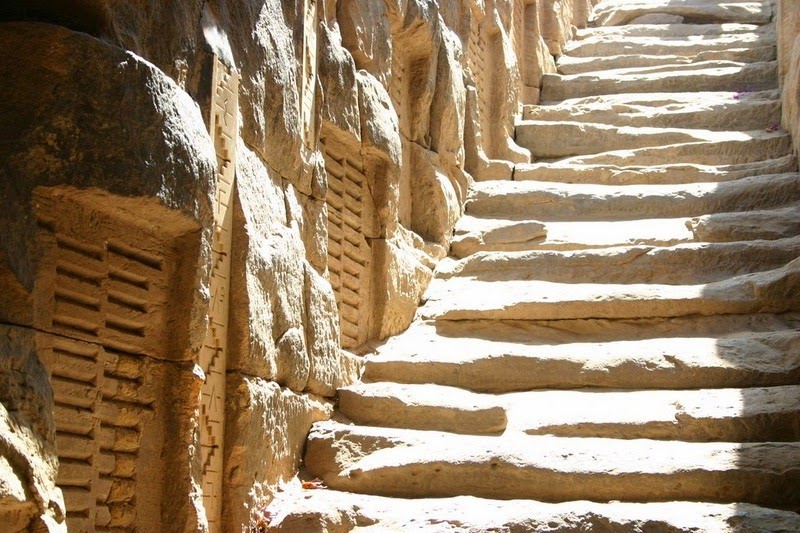
One notable example is the nilometer of Helwan, a city south of Cairo, on the bank of the Nile opposite the ruins of Memphis. This nilometer is recorded to have been restored or built in 699 AD, about half a century after the Muslim conquest of Egypt. By 714 AD, however, the nilometer was in such a bad state that the Umayyad caliph, Al-Walid I, ordered the governor of Egypt to build a new nilometer.
The Roda Island Nilometer
The new nilometer was built on Roda (or Rhoda / Rawdah) Island, not far from Fustat, Egypt’s capital at that point in time. The island has been an important location since pharaonic times and served many functions over its long history, including a port, an arsenal, a fortress, and a rich garden.
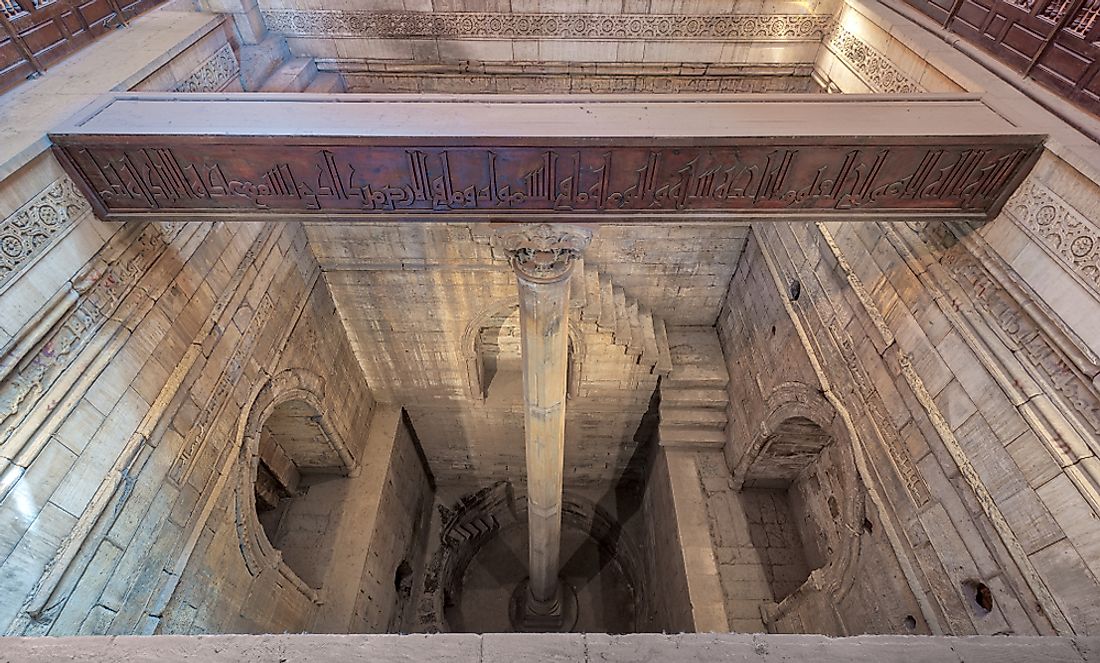
The island’s nilometer, which may be referred to as the Roda nilometer, is located on the southern tip of the island, and is perhaps the most famous example of this ancient device. The original 8th-century nilometer was destroyed by a flood around 850 AD. A new one was built shortly after the disaster, and is the one that is still standing today. The current Roda nilometer was designed by the astronomer Abu al-‘Abbas Ahmad ibn Muhammad ibn Kathir al-Farqhani (known also as Alfraganus in the West). The nilometer has been restored on various occasions, including once between 872 and 873 AD, and again in 1092 AD. Restoration had also been carried out during the Ottoman period, as well as in more recent times.
The Roda nilometer consists of two main elements – a well and a column. The well is a 10 m (32.8 ft) wide square hole dug to a depth of 13 m (42.7 ft). One of the challenges that faced the builders of this nilometer was the nature of the ground that they had to work with. To create the well, at least 1300 m³ (4265 ft³) of earth and clay had to be removed.
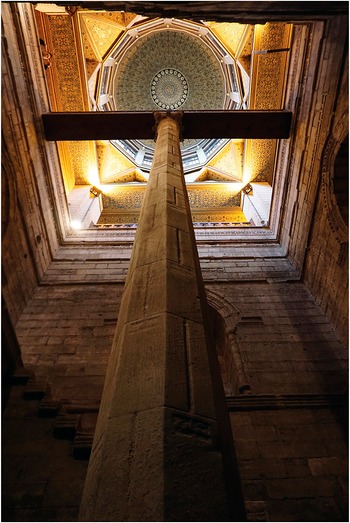
Having done that, the builders needed to stabilize the structure and prevent it from sinking into the clay. This was achieved by raising the structure on a foundation of thick tree trunks. The well is lined with stone and is accessible via a staircase on its interior walls. The well, which is circular at the bottom but rectangular at the top, has three stories, each having an opening turned towards a different direction. These openings are connected to the Nile through tunnels, allowing water to enter the well during the annual flood season.
How Much was a Good Flood?
The octagonal column is the part of the nilometer used to measure the water level of the Nile during its inundation. This column is made of marble and is set in the center of the well. It is topped with a Corinthian column and held in place by a wooden beam on the top that spans the nilometer. The column is graded and is divided into 19 Egyptian cubits, each cubit being about 50 cm (20 inches). Therefore, this nilometer was able to measure floods up to about 9.5 m (31.2 ft). 19 cubits of water, however, meant that Egypt was facing severe flooding.
When such a situation occurred, children wearing yellow turbans would run in the streets to alert the population of Cairo of the impending disaster. On the other hand, 12 cubits of water was too little and was a sign that the country would be facing a famine that year. 16 cubits was the ideal amount of flood water needed for a bountiful harvest. The Nile’s flood level can also be read using the staircase on the well’s interior walls. The staircase consists of 45 steps, each of which is 24 cm (9.4 in) high. Therefore, the level of the floodwaters can be easily calculated by this means.

It may be mentioned that the definition of a ‘good flood level’ was not the same through the ages. The Greek geographer Strabo, for example, wrote that before the time of Petronius (the Roman prefect of Egypt in the 20s BC), “the crop was the largest and the rise the highest when the Nile would rise to fourteen cubits, and when it would rise to only eight a famine would ensue;”. During the time of Petronius, however, “when the nilometer registered only twelve cubits, the crop was the largest, and once, when it registered only eight cubits, no one felt hunger.”
The Roda nilometer was once covered by a conical dome, which was unfortunately destroyed during the French occupation of Egypt. Fortunately, the scientific mission that accompanied the French expedition made careful and thorough descriptions of the Roda nilometer, including its architecture. Thanks to these records, it was possible to make a reconstruction of the dome. The current structure dates to the reign of Farouk I, the penultimate King of Egypt and the Sudan.
Nilometers from Pharaonic and Greco-Roman Times
One of the differences between the Roda nilometer and its predecessors from the pharaonic and Greco-Roman periods is that the former was not within the compound of a religious structure. Although there is a mosque near the Roda nilometer, this was only built later on, during the 11th century.
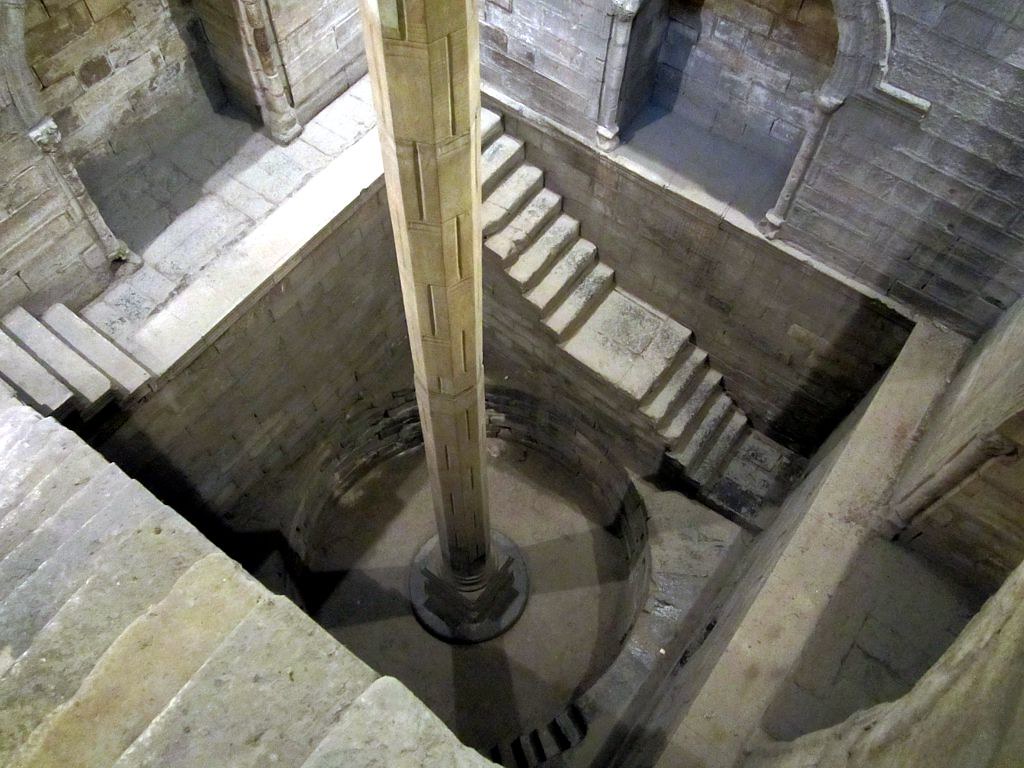
On the other hand, pharaonic and Greco-Roman nilometers were commonly associated with temples and were therefore under the control of priests. By accurately predicting the flood level of the Nile, the priests must have looked as though they were performing magic and would have surely impressed the general population.
One of the temples in which a nilometer has been found is the Temple of Kom Ombo, located 48 km (30 mi) to the north of Aswan. This temple was built during the Ptolemaic period and is unusual for being a double temple. This means that the temple was dedicated equally to two gods – Sobek and Horus, which is reflected in the temple’s perfect symmetry along its main axis. The nilometer is located within the compound of the temple, though not in the temple itself.
The Kom Ombo nilometer is noticeably different from its counterpart in Roda. Unlike the latter, the former does not have a column. Instead, the Kom Ombo nilometer consists only of a well. Like the well of the Roda nilometer, the one at Kom Ombo also has steps along the walls of its interior, which allowed the flood level of the Nile to be read. A tunnel with an opening in the well connects the nilometer to the Nile, which lies beyond the temple’s walls. At ground level, the nilometer is identified by a small cylindrical wall.
Nilometers in Elephantine
One of the most important nilometers in Egypt is the one in Elephantine, an island opposite the city of Aswan. For much of Egypt’s ancient history, Elephantine was the country’s southernmost city. Therefore, it was here that the first measurements of the Nile’s flood level for the season would be made. Although the current Elephantine nilometer dates to the Roman period, archaeologists believe that this is a restoration and that the original pieces were replaced at some point in time.
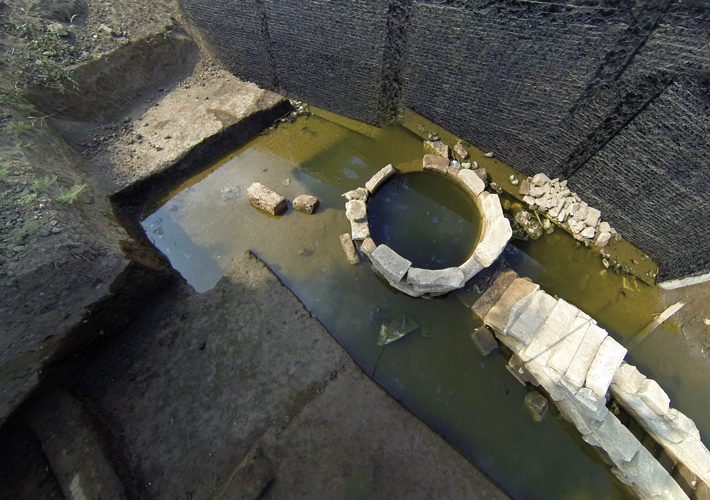
It has also been speculated that the original nilometer dates to the 6th Dynasty of Egypt, between 2325 and 2150 BC. This would make it the oldest known nilometer in Egypt. Additionally, it has been suggested that the structure was expanded during the 25th Dynasty, between the 8th and 7th centuries BC. The nilometer continued to be used till the early 20th century. Incidentally, the last recorded measurement taken at the Elephantine nilometer was on the 25th of September 1928.
Unlike the Kom Ombo nilometer, the one at Elephantine does have a column in the middle of the well. Additionally, the Elephantine nilometer has a long staircase consisting of 52 steps along the walls of its interior. Apart from that, this nilometer has two openings on the Nile, which allowed water to enter the structure and to be drained from it. When the water level rose, the structure could be filled with water, and when it receded, it could be emptied.
Measuring the Nile in the Modern Era
Although the importance of the nilometer in ancient Egypt is clear, the device continued to be used after Egypt was conquered by foreign powers. This is best exemplified by the nilometer of Fustat (or Fostat), Egypt’s capital following the Muslim conquest. In 872 AD, the governor of Egypt ordered the reconstruction of the nilometer of the new capital, which was originally built during the Umayyad caliphate. This nilometer was built on Roda Island and is known today as the Roda nilometer.
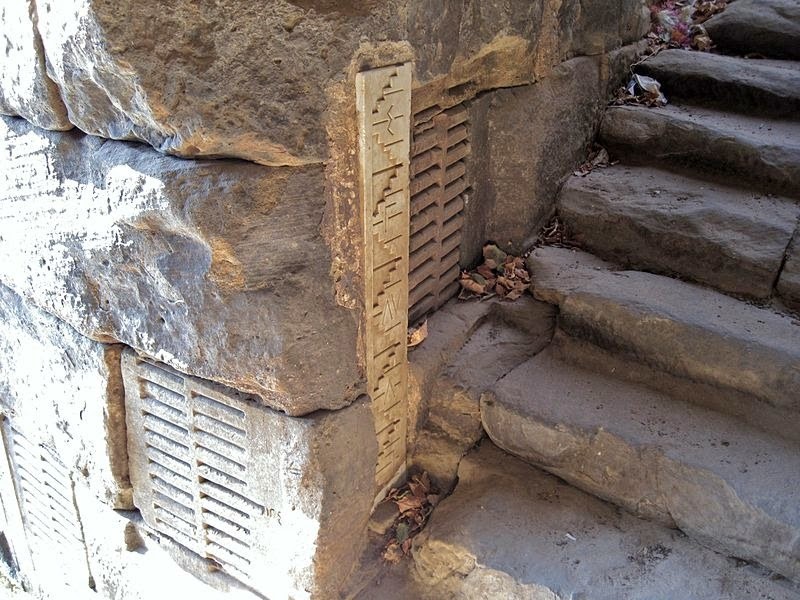
The nilometer continued to be used even into modern times. By 1901, a bridge was built over the Nile in Aswan, and it had a mechanism for measuring the flood level of the river. Eventually, however, the nilometer became obsolete, as the flow of the Nile is now controlled by the Aswan High Dam. Therefore, the Nile is no longer subject to annual flooding and there is no longer a need for this ancient instrument to measure the flood level of the river.
For thousands of years, nilometers measured the water level of the Nile River during the annual flood season. This, in turn, was used to predict the fortunes of the annual harvest, the taxes to be imposed (which determined the revenues of the state), as well as the prices of foodstuffs. Therefore, the nilometer was a vital instrument for ancient Egyptian civilization. The significance of the nilometer is evident in the fact that even after Egypt was conquered by foreign powers, nilometers continued to be utilized. As a matter of fact, the nilometer only became obsolete during the 20th century, when the Aswan High Dam was completed.
